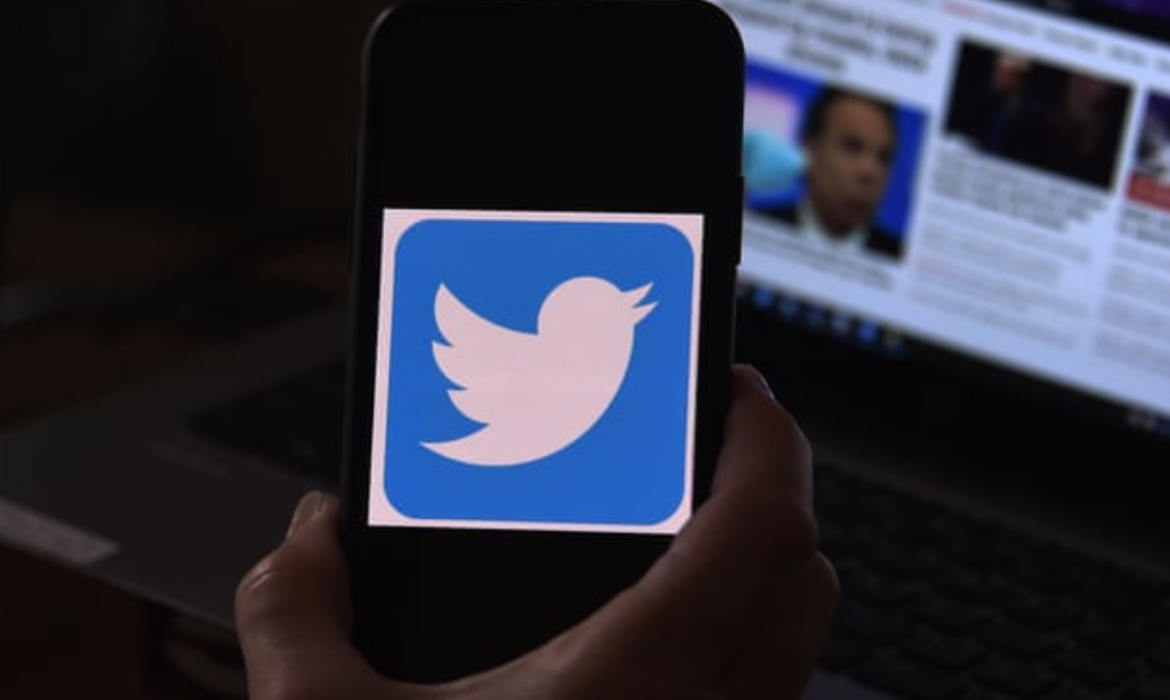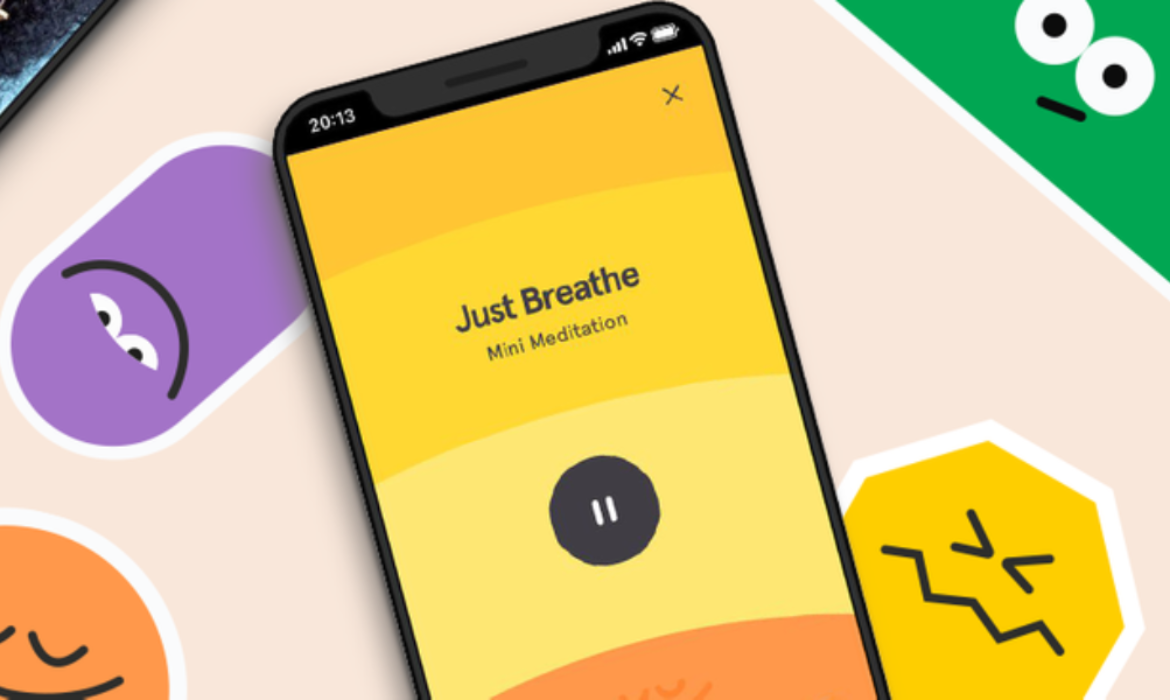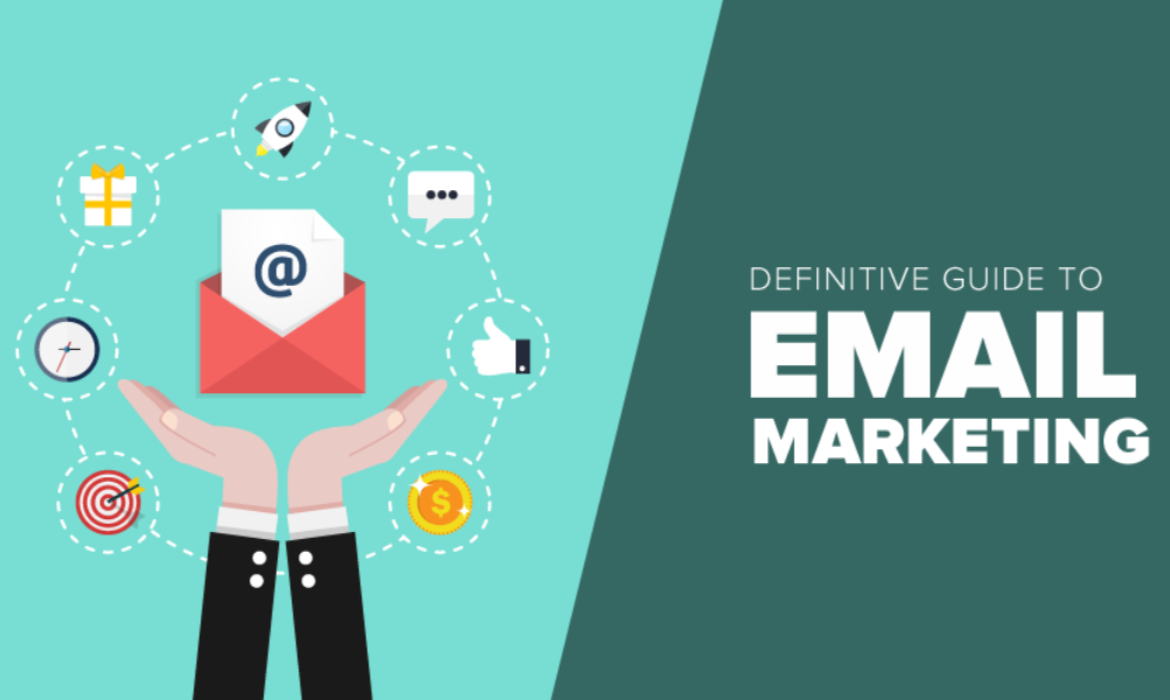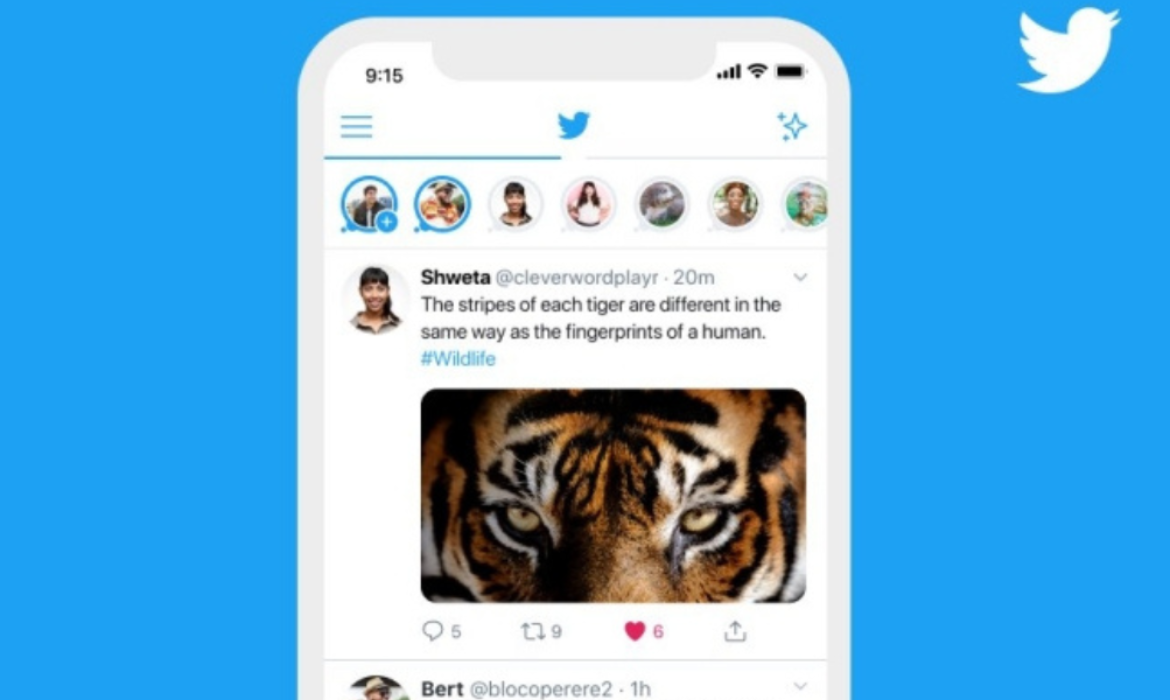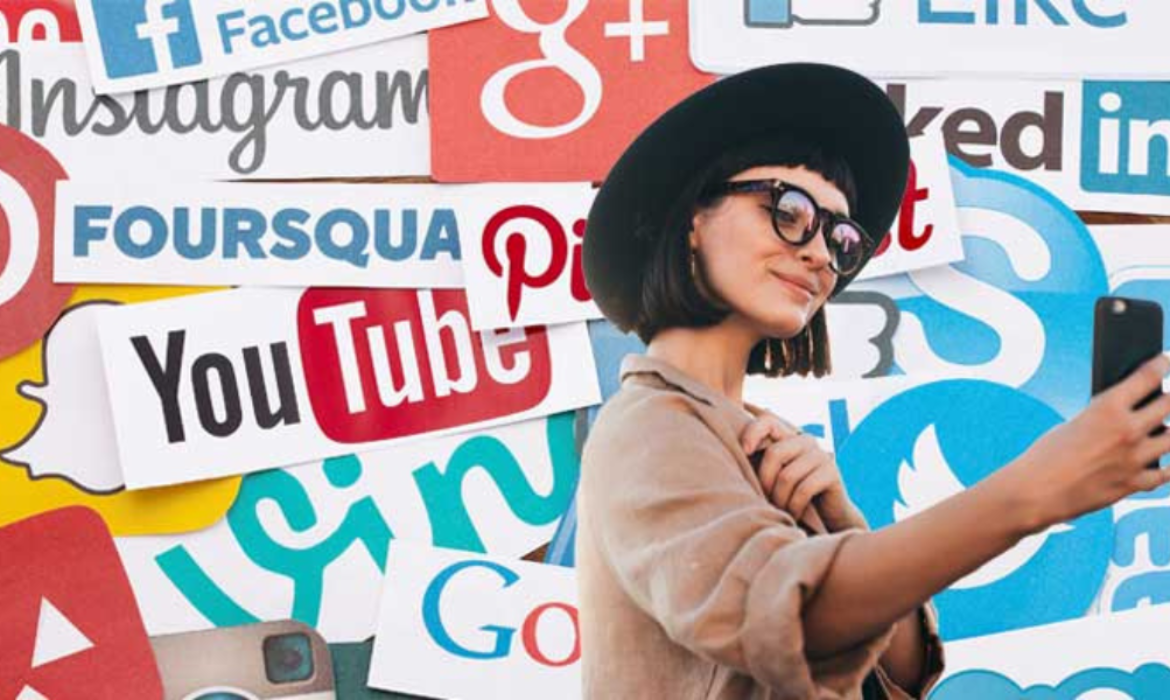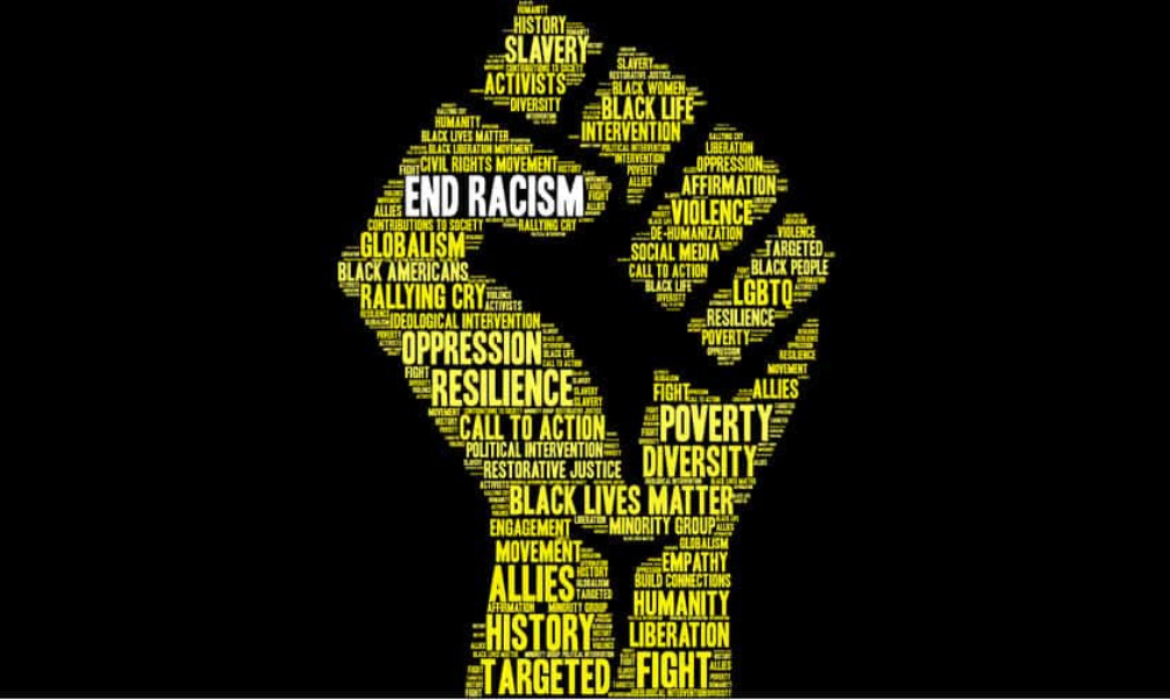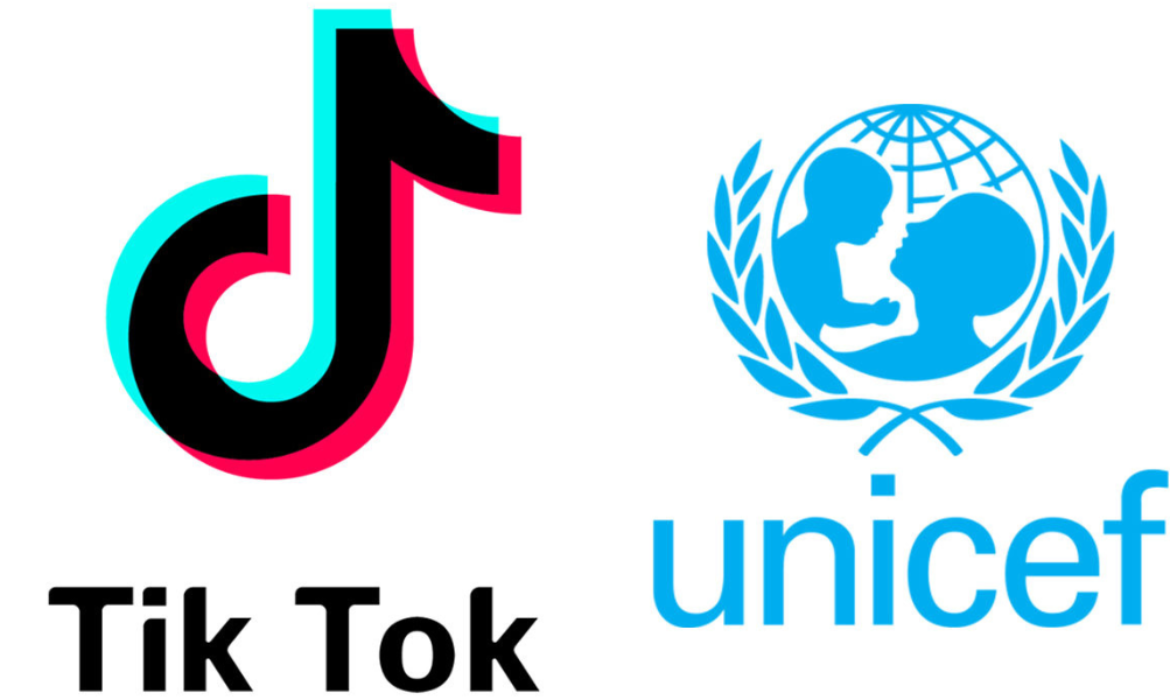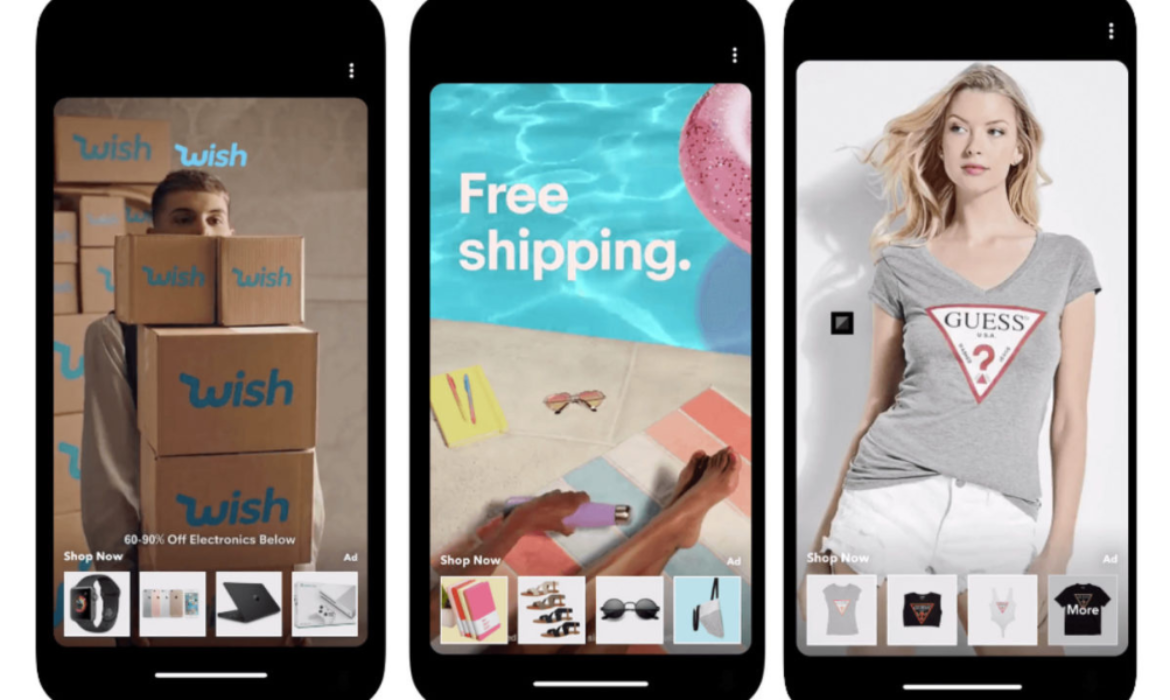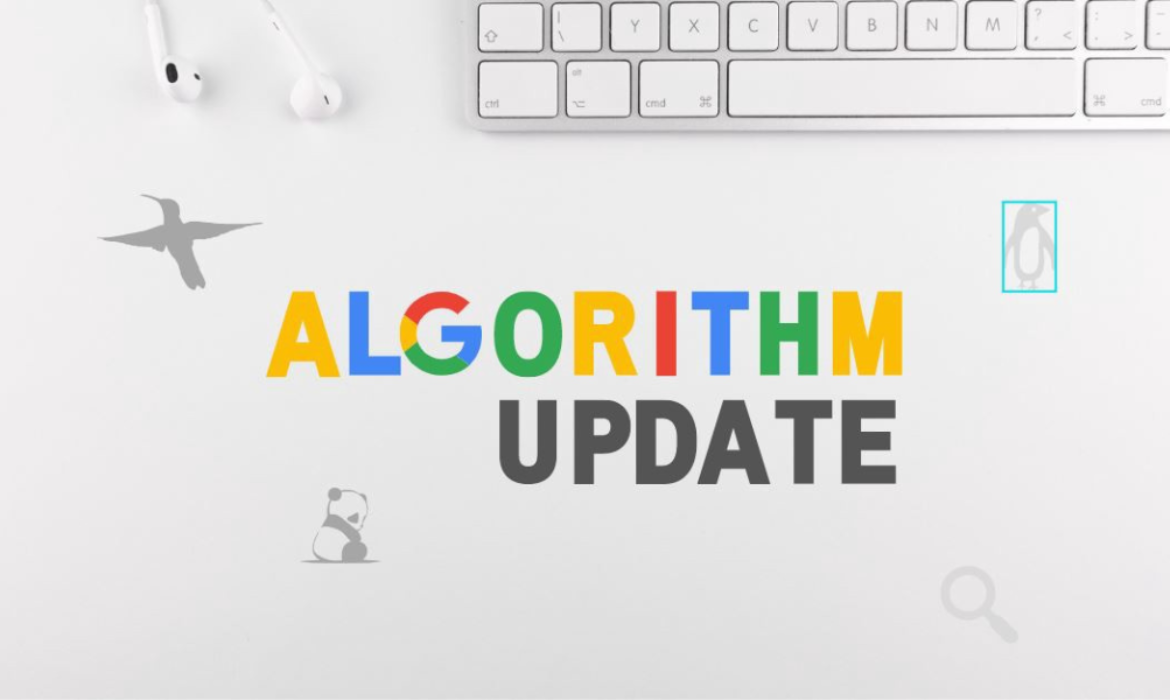Twitter Tests New Feature to Limit Sharing of Unread Articles
- Twitter announced that it will test a new feature that will prompt to encourage users to read an article before sharing.
- The new feature will only appear for U.S based Android devices for now.
- As per the Twitter Support team, the platform will only check if the user has clicked the article link on Twitter and not anywhere else on the internet.
- Twitter aims to empower healthy and informed public discussions with this new feature.
Twitter to experiment with a new feature that prompts users to read articles before sharing, is the latest effort to curb the spread of misinformation on the platform.
Sharing an article can spark conversation, so you may want to read it before you Tweet it.
To help promote informed discussion, we're testing a new prompt on Android –– when you Retweet an article that you haven't opened on Twitter, we may ask if you'd like to open it first.
— Support (@Support) June 10, 2020
Twitter product lead Kayvon Beykpour commented upon the announcement of the feature testing,
“It’s easy for links articles to go viral on Twitter. This can be powerful but sometimes dangerous, especially if people haven’t read the content they’re spreading. This feature (on Android for now) encourages people to read a linked article prior to retweeting it.”
This Is An Old Ongoing Problem
The problem of users sharing news based on headlines is not new. A 2016 study from computer scientists at Columbia University and Microsoft found that 59% – nearly two-thirds of links posted on Twitter by users are shared without opening the articles.
During the pandemic, the social media giant has issued many misinformation warnings to curb the spread of any fake news -that includes one against the U.S President Donald Trump. This move led to Trump issuing executive orders targeting social media companies.
Will It Impact The Bots?
Twitter has tried many times before to spot the spread of misinformation. Like Facebook and other social media platforms, it has come scrutiny for the content it promotes.
Twitter’s solution is not banning retweets but tries to nudge the users to rethink their actions on the social network. Recently, in May it launched a feature that allowed users to limit who can reply to their tweets. It also rolled out another feature to hide specific replies to tweets.
However, the main problem is ‘bots’. According to a paper published in AAAI, “Increasing evidence suggests that a growing amount of social media content is generated by autonomous entities known as social bots.”
For instance, recently, new research reported that roughly half of the twitter accounts that discussed ‘Reopen America’ were bots. The AAAI paper also estimated that between 9%-15% of active Twitter accounts exhibit social bots behavior – nearly 49.5 million of its 330 million users. This new feature will impact the bots and might make it difficult to retweet any content.
Snapchat’s New Feature ‘Snap Minis’ Will Be the Next Hot Thing in the Market
Snap introduced an array of new products and partnerships for Snapchat including original shows, Minis, new lenses, new navigation bars, and games at the 2020 Snap Partner Summit.
The highlight of the event was Minis – a suite of miniature apps developed by third parties that will run inside Snapchat. This will be integrated into the Snapchat chat window that would allow users to buy movie tickets, shop with friends or meditate.
In an interview with The Verge, Snap CEO Evan Spiegel said,
“Let’s say you’re getting ready with your friends, or your school dance is two weeks from now — you can actually shop together with your friends, which I think could be a really fun experience.”

Image Credit: Snap
What Snap Announced:
-Minis are web-based apps built on HTML-5 for Android and iOS.
-Minis will start rolling out next month on Snapchat with the first seven minis.
-A mini-app by Coachella to coordinate and plan a festival line up with the friends.
-A mini version of Headspace to meditate and send encouraging messages to friends.
-A mini-app by Tembo to create flashcards for studying,
-A mini-app by Atom to buy movie tickets, pick seats, and choose timings.
Why They Matter:
– The inclusion of mini-apps will increase Snapchat’s functionality and potentially making it a one-stop app like WeChat for GenZ.
– The main purpose behind creating minis is creating eCommerce avenues as its main competitor WhatsApp has already ventured into digital payments and shopping.
– The company’s growth is stable in the messaging space but is not big enough to compete with the likes of Facebook and Google for ad revenues in the long term.
– As a result, it plans to build an ecosystem that revolves around its camera technology to unlock new revenue generation options.
What’s New For Brands:
– Brands especially looking to target the younger audience should consider developing a Snap Mini to provide services and ensure easy accessibility to Snapchat users.
– It is easy to maintain a mini-app than a full-size app as brands can leverage the Snapchat’s user base to gain traction.
By The Numbers:
– These miniatures applications are compared to WeChat’s mini-programs that generated $113 billion for Tencent last year, according to The Verge.
– Snap execs revealed that it reached over 229 million daily active users on average in the first quarter of this year, with over 100 million in the U.S. alone. (That’s larger than TikTok or Twitter’s U.S. footprint.)
And, there’s lots more from the 2020 Snap Partner Summit:
1. Camera Kit: It allows developers to bring Snapchat’s AR capabilities and engagement into their own apps that enable apps like Squad to create a co-viewing experience while video chatting with friends.
2. Dynamic Lenses: It allows developers to bring real-time information from their app into Snapchat lenses.
3. Bitmoji For Games: A cross-platform avatar for gaming on mobile, PC, or console. This means it is easier for a user to maintain a uniform gaming identity online by using one avatar across all games.
4. Snap Games: An interactive way for friends to play the game on mobile which includes “Bitmoji Party.”
5. Lens Studio: A free and new desktop feature that allows developers to bring their machine learning models to power lenses. For the first SnapML creations, the company partnered with Prisma, Wannaby, and others.
6. Local Lenses: A new feature that allows users to create 3D worlds on top of their building and or decorate nearby buildings with colorful paints and have a new AR experience.
7. Scans: Snap expanded its scan platform and announced new partners for plants, dogs, and nutrition information. Plant Snap will help the user identify 90% of all known plants and trees. Dog Scanner to identify 400 breeds, Yuka will launch a nutrition scanner to provide ratings on the quality of ingredients in the packaged foods and Louis Vuitton will help users scan the monogram to be transported into the inspiration behind their latest collection.
8. Voice Scan: It allows users to issue voice commands to find lenses.
How Email Marketing Will Help Your Business Grow in 2020
Does Email marketing still exist in times of social media, artificial intelligence, chatbots, videos? A thought to ponder.
If you feel email marketing has lost its charm, then you are far away from the truth.
The truth is, email marketing is growing and email campaigns are still the best strategy for brands and businesses.
Here it is, Why?

Image Credit: Oberlo
As per data by Statista(2020), In 2019, the email users were 3.9 billion users and are expected to grow to 4.3 billion users in 2023, which is half of the world’s population. This clearly shows email marketing is an opportunity that should not be missed.
The above infographic on Email Marketing Stats 2020 provides facts and figures about the email market which is still robust and one of the best marketing strategies.
What Is Email Marketing?
Email marketing is more effective than SEO, affiliate marketing, or social media because it has a direct line with the audiences. It helps you connect with your leads, nurture them, and convert them into customers.

Image Credit: BackLinko
However, with the growing fervor of TikTok Facebook, Snapchat, will this old school tactic still work?
Emails have a better reach than social media and converting a prospect into a buyer. This shows email leading social media. Email is 40 times more effective than Facebook and Twitter combined. (McKinsey)
A third of customers who have subscribed to the retailer’s newspaper is a direct result of email marketing messages. (E-marketer)
These numbers are nice to know but you are still wondering, how are email marketing campaigns important in 2020?
Well, that’s what the next chapter is all about.
How Is Email Marketing Important In 2020?
With the booming popularity of social media and search, the importance of free emails in email marketing is higher than ever.
Let us comprehend the value of email marketing in 2020.
1. Everyone uses Emails:
Young people use email for several things – social media and personal expenses, mailing lists, and brand promotion or business. So, everyone has a valid email address.
2. Emails are easy to design and create:
An attractive and eye-catching email campaign for a small business budget with a reputed email marketing service provider can create wonders and similar to big brands.
After finishing designing the newsletter or free emails, businesses can quickly start to use email campaigns for promotion.

Image Credit: uCookies
3. Email marketing links all other channels
Email campaigns are a direct line of communication with the audience and a suitable way to promote marketing strategies.
Social Media
Most email service providers have footers with social media icons at the bottom that includes links to LinkedIn, Facebook, or Instagram. Subscribers can access those links and share the campaigns by clicking on it. Also, brands can share the reviews, posts on the social feed so subscribers can connect with the brands online.
For instance, the example of Urban Outfitters is a visually appealing email that highlights their most-liked Instagram posts. Also, note the share buttons at the bottom of the email.

Image Credit: Really Good Emails
Content Marketing
77% of people prefer to get permission-based promotional messages via email campaigns. To start with, first, a sizable email list is to be prepared. There are several ways to do this like giving something away for free or offering a newsletter update, videos, research report, infographic, or valuable content.
Make good use of content with interesting pictures and custom RSS feeds. For instance, the US outdoors always include interesting content in their email campaigns.

Image Credit: Emma
Webinars:
Brands can promote webinars on emails to their subscribers who are genuinely interested to hear and respond.
Performance Analysis
Email service provides information on how to improve future email campaigns and learn about subscribers. However, this will be a paid service.
Analytics aids in keeping a track of active and engaged subscribers and identifying trends as well as new markets. This data can help in retargeting campaigns and use marketing resources in the right way.
Capitalizing On The Data Collection:
Email marketing is one of the most scrutinized marketing methods in the post GDPR world. 78% of people say they are likely to trust companies with their personal data if they use it to personalize their experience through different channels like emails.
Emails give access to understand subscribers’ behavior and learn about their habits and interests to create customized email campaigns. Personalized email campaigns can be created by conducting surveys to collect quality data from active subscribers.
4. Encourage more subscriber participation:
Marketers gain the trust of the subscribers when they encourage more participation from them and let them control their inbox. Put a preference center link at the bottom of the email campaigns and prompt new subscribers to fill it.
A preference center allows the subscribers to tell the brands on how often they want to be emailed and what type of content they prefer. Below is an example of a preference center by Brooks Running.

Image Credit: Emma
5. Stay updated with automation and technology
Email service providers always give access to the latest automated features to give an enriching experience to the audience in the following areas:
-Segmentation
-Post-sales communication
-Re-engagement
-A/B Testings
Best Email Marketing Campaigns
With in-depth details on the importance of Email marketing, in the next chapter, we will see the best email marketing campaign examples.
1. BuzzFeed
Email Marketing Campaign: “Buzzfeed Today” Newsletter
Newsletters are Buzzfeed’s top sources of traffic. Buzzfeed has amazing, punchy, and short subject lines. They have awesome preview text that compels the reader to open the email.
If their subject line is a command, the preview text is the logical elaboration of the subject line.

Image Credit: Mail Floss
Their newsletters are from politics and daily news to DIY and cooking. They cover different audiences as they know exactly what to recommend to whom because of their email segmentation.
2. Amarso
Email marketing- another way to approach the cart abandonment.
If your product is enticing then put it at the center of your email marketing campaign directed at the customers who shopped but didn’t purchase. In this two-step email marketing campaign, Amarso is doing the same thing.
The 1st image is sent to the shoppers after an hour of shopping for those products whereas the 2nd image is a reminder of Amarso’s amazing products seen a few days back.

Image Credit: MailFloss
3. Airbnb
Short, Crisp and Communicative Feedback Survey in their Email Campaign
Their email campaign is short, crisp, fresh, and minimalist with a clear objective. Their emails are straight to the point and with a clear CTA. The email campaign looks good and engaging. In every email, you will get guides to different cities.

Image Credit: Mail Bakery
Email Marketing Platforms or Email Service Providers (ESPs)
There are many email marketing platforms but obviously, there is no single ‘best email service provider’. The best option depends on the objectives, goals, features, and list size of the marketers.
In this chapter, I am reviewing five of the top Email Service Providers. The features, pricing, pros, and cons of each email marketing platform are highlighted to help the marketer choose the best option for you.
1. Mail Chimp

Image Credit: Formget
Features
-It is the most popular and leading email marketing platform.
-It has an excellent dashboard with prebuilt templates, reports, lists, and more.
-There is email automation, better integration, optimization, and analytics.
Pricing
-A forever free plan allows 12,000 mails every month to 2000 subscribers.
-There are 3 packages based on features and the number of subscribers.
-Essentials for $9.99, standard for%14.99, and Premium for $299 are email marketing plans.
Know more about pricing
Pros
-It is best for small and medium-sized businesses at an affordable cost.
– It can handle large volumes of emails.
-The messages can be sent to email clients as well as for promotion on Facebook, Instagram, and other social media platforms.
-It has easy to use WYSIWYG editors and can access reports on the open rates clicks, spammed, unsubscription.
-It has friendly customer service and excellent email analytics.
-It helps you to customize the tools for your business with over 300 integrations.
Cons
-The regular updates and reconfiguration disrupt the entire working system as users have to understand and adapt to the new changes.
-Apart from the chat function, phone support is not provided.
-The individual addition of email contacts is cumbersome and has limited segmentation features.
-Emails sent via Mailchimp often goes to the promotion tab of Gmail or spam at times.
2. Mailjet

Image Credit: Formget
Features
-It has the best real-time dashboard and is preloaded with free responsive email templates and newsletters
-There are advanced reporting features like to track deliveries and know user actions.
Pricing
It has a free email marketing trial for 30 days for 6000 emails a month and 200 emails a day. There are 3 Packages like Basic, Premium, and Enterprise plans for each month.
Free email marketing trial for 30 days for 6000 emails a month and 200 emails a day.
Know more about pricing here!
Pros
– The dashboard is incredibly innate and the drag and drop editor option allows users to create different email templates.
– It provides a report that shows usual data including bounces, clicks, and so on.
-It is Reasonable and economical pricing compared to the competitors.
-It’s an all in one platform to send, track, and deliver marketing and transactional emails without any additional cost.
Cons:
-There are limited designs for email templates and cannot store images.
-Unsubscribing inactive users from the list is tiresome using Mailjet’s removal interface.
-The segmentation options are limited. Eg. One can run a campaign but cannot set conditions like whether a recipient has/unopened/bought the product.
3. Active Campaign

Features
– It has an intuitive email template builder and advanced marketing automation
-It has features like segmentation, machine learning, CRM and sales
-It has the best campaign tracking, free image hosting, email funnels, and autoresponders.
Pricing:
There are no free plans available but an email marketing test run can be done for 14 days. Active’s pricing packages are affected by two factors: contacts and features. It has 4 packages available – Lite for $9, Plus for $49, Professional for $129, and Enterprise for $229.
Know more about pricing
Pros:
-The dashboard shows the full history of your contacts and gives access to real-time reports that features display tracking of essentials like geolocation, clicks, opened rates, unsubscription details.
-It has great integrations with other tools like Facebook Ads, Gmail suite, websites, and more.
-The Lead scoring helps to prioritize accounts for the sales team and has dynamic content.
-It offers a free migration service. Unlike other tools, Active Campaign doesn’t charge you to move data from one email marketing tool to another.
Cons:
– The pricing isn’t the lowest but it is worth the value.
– The layout is not user friendly and many good features cannot be accessed seamlessly by the users.
– It becomes difficult to handle large volumes of emails.
4. Klaviyo

Features
–It helps e-commerce marketers to build, measure, and optimize email campaigns.
-It has a hassle-free dashboard that showcases all the recent campaigns based on revenue, days, and more.
-The segmentation of the platform is excellent based on the behavior and transactional data.
-Start your campaigns with pre-built email templates that can be customized.
– Use an autoresponder to send automatic emails to the audience.
Pricing
It offers a free trial of up to 250 contacts and can send 500 emails. The plans are devised based on the number of contacts. Pricing increases with the number of contacts- the maximum pricing option is up to $1700 per month for up to 146,00 contacts and a minimum of $25 for 500 contacts.
Know more about pricing
Pros
-It is easy to set up and user friendly.
-Enhance the eCommerce business on integration with Shopify.
-Create Personalized product recommendations for post-sale engagement.
-Visually transform email workflows and sign up forms to collect leads.
-Access to marketing automation to follow up with customers after they abandon a purchase.
-Integrate with the Facebook custom audience and create a comprehensive marketing campaign.
Cons
– The pricing is aggressive and high for smaller businesses.
– For beginners, the interface can be challenging initially.
– Limited customer chat support and no phone support.
-It can be difficult to use while integrating with Magneto and checking analytical information.
5. Gmail

Features:
-Everyone’s favorite Email marketing tool.
-A free, advertising-supported email service offered by Google.
-It’s a part of Google G Suite with 15 GB storage, color-coded inbox, and filters.
-Appropriate for all types of businesses.
-GMass extension can be used to send personalized and mass emails to every email address in the Gmail account.
Pricing:
It is a free service.
Pros:
-It is free, stable and fast
-It provides 99.9% spam and virus protection.
-It has Integration with the whole Google suite.
-Secured web platform and can be customized to an extent keeping it clean and simple.
-Integrated with Hangout that helps to directly reach the customers via call or chat.
-Excellent handling of large attachments and volumes of emails.
-A business email address can be used by logging into a Gmail account.
Cons:
-It might not work easily with a few desktop software or enterprise applications.
– There is no backup of emails in the inbox.
-It is connected to Google Drive storage, therefore, if it is full then it creates problems in receiving emails.
-Many client emails get sent to spams.
-It collects mail from the hosting server and will not collect email quickly.
Why do many use Gmail for email marketing?
- It has spam filters that reduce the risk of domain spoofing, phishing, and other malevolent practices.
- It has great features and saves time in searching for mails and referencing old mails.
- Gmail users are highly engaged which is the key point in email marketing.
How to use Gmail to send a newsletter?
GMass turns your regular Gmail account into a powerful email marketing platform. Without GMass, Google’s platform allows you to send email marketing campaigns to limited people in your G-suite.
Using GMass helps you send emails through the world’s highest delivering servers and gives the highest open rates. It also includes features like
GMass provides access to following email marketing features to your Google or Gmail account:
-Open tracking,
-Click tracking,
-Mail merge
-Message Personalization,
– Mass emails or bulk email service
-Scheduling.
-Create a mailing list
Best Practices To Follow For Email Marketing

Wrapping Up
The importance of email marketing has grown over the years. With all the insights provided in the article, here are a few takeaway points:
-Email is easy to integrate digital marketing campaigns.
-Email marketing gives a scope to build personal relationships with users.
-Email marketing is constantly evolving implies that email marketing strategies should also change with time.
-Technological innovation continues to improve email marketing and the way subscribers are engaging with emails is also changing,
-This proves that email marketing is here to stay and email marketing automation is the new trend that is catching up. Time to up the game and think about the new techniques and strategies for your next campaign.
Learn more: Facebook Is All Set To Launch Its Toolkit For “Email Marketing”.
Twitter Introduces Fleets – The 24-Hour Disappearing Posts
- After its first launch in Brazil in March, followed by Italy in April, Twitter has rolled out its version of Stories’Fleets’ for users to post ephemeral content in India.
- Fleets are self-deleting tweets which will disappear after 24 hours without likes, retweets or replies. People can only react with DMs to the Fleets.
Nearly, 7 years ago Snapchat introduced a feature ‘Stories’ to their platform that enabled users to share content with friends and followers that would disappear after 24 hours. Soon, a similar feature was added to Instagram and WhatsApp as Stories and Status respectively by Facebook.
Now, its Twitter’s turn.
How does it matter
India is the 8th largest market for Twitter based on usage and has around 13 million users. Twitter users in India can now have access to the feature ‘Fleets’ and in the coming days, it will be available on iOS and Apple.
Namaste! Starting today, Fleets are coming to India. If you’re in India, check it out and let us know what you think! #FleetsFeedback 🇮🇳 pic.twitter.com/U6QiHynm1U
— Kayvon Beykpour (@kayvz) June 9, 2020
Testing, testing…
We’re testing a way for you to think out loud without the Likes, Retweets, or replies, called Fleets! Best part? They disappear after 24 hours. pic.twitter.com/r14VWUoF6p— Twitter India (@TwitterIndia) June 9, 2020
Twitter is taking a staged approach similar to LinkedIn who rolled out its Stories feature in the UAE market, after the launch in Brazil and Netherlands.
Why, so important
The company said in a statement,
“We learned from research that people don’t Tweet because Tweets are public, feel permanent, and display the number of Retweets and Likes. We hope Fleets will empower many more people to express themselves more freely.”
By far the feedback received is optimistic and following are Twitter findings from the launch of Fleets in the two markets:
- Fleets make it easier for people to share thoughts.
- People are finding Twitter Fleets simpler to start convos and the number of tweets/DM is also increasing.
- People are expressing their thoughts freely after using Twitter Fleet.
- Though it is early to say, only a small percentage of abuse is reported each day after using Twitter Fleets. This was a key point that Twitter was looking to focus to make the platform toxic-free that had become a part and parcel over time.
How does it work:
“Fleets are fast and familiar. People can tap on their own avatar to start, add text or media, and hit send. That’s it, that’s how one Fleets.”

Twitter Fleets are ephemeral.
Image Credit: Twitter
Fleets, as seen in the images are similar to Stories that appear at the top of users’ Twitter home feed. Users can choose to make a post in a text (still 280 characters) or photos, GIF’s or videos. Users can tap on someone’s avatar to see what the person has posted which will eventually disappear after 24 hours.
Although Fleets doesn’t have additional visual presentation tools and AR functionality at this stage like most other Stories options but Twitter will gradually develop on this front as it had acquired Chrome Labs, a company focused on Advanced Stories presentation.
Lastly, Twitter Fleets is still in experiment mode and with access to more than 30 million users for a test pool, it could be the starting point for the global rollout.
So be ready with your Twitter Fleets strategy!
Influencers Share Their Secret to Earning Big Bucks on Social Media
Key Insights
- Affiliate marketing and paid advertising are one of the top revenue sources but the real bread and butter of influencer income is brand sponsorships reveals a survey of 69 digital stars by Influencer.co
- The survey results were gathered at the beginning of 2020, before the pandemic that has changed the consumer and digital landscape.
- The result highlighted that influencers have diversified income sources and can help them earn even in an economic downturn.
A goal is a dream with a deadline.
– Napoleon Hill
Making a living out of online business is a dream that is now achievable. For many, it is a dream turned reality but with a fair share of struggles. A survey of 69 influencers conducted earlier this year by influencer platform Influence.co highlighted myriad ways available for creators to make big money in 2020.
The results gathered before the pandemic outbreak reveals Brand sponsorship as the top moneymaker with 78% of creators calling it the main source of income. 58% of creators highlight paid advertising like YouTube AdSense also amongst the top three sources of income. However, this category has been dropped off recently as advertiser demand has run down due to the pandemic.

Image Credit: Influence.co
However, influencers have leaned on alternate revenue streams and moved away from sponsored posts as brands have paused/postponed influencer campaigns in 2020. 41% of survey respondents have named commission-based revenue as a key income driver followed by affiliate marketing (39%). Respondents also pointed to physical merchandise (26%) as one of the top income sources.
These are income sources where influencers are paid a fee for e-commerce sales that they drive from their social accounts.
Below is the breakdown of income sources that is listed by influencers as primary revenue sources in the survey.
1. Brand Sponsorships (78%)
78% of influencers surveyed listed brand sponsorships as a primary source of income.
https://www.instagram.com/p/BYwIRyWgHqY/?utm_source=ig_embed
H&M has the largest followings as women reflect H&M style all by themselves as a part of the influencer campaign. H&M partnered for its fall 2017 collection with two influencers -fashion blogger Julie Sariñana and model Ela Velden. Sariñana promoted the clothes on her own Instagram account as she loved them.
Brand sponsorships are mostly sponsored posts on social platforms like Instagram, YouTube, and TikTok. The most reliable way of making money and the main source of income has taken a hit in the last few months mainly because:
- Advertisers have trimmed their budget to save costs.
- Brands are facing economic headwinds caused by the pandemic.
As reported by Business Insider, the frequency of sponsored posts has dropped down on Instagram and 22% of creators have lowered their rates due to slow demand.
As this category is affected by the economic downturn, brands are partnering with influencers to conduct live streaming as consumers at-home interest in real-time videos have spiked.
2. Paid Ads (58%)
The second-highest source of income listed by influencers in the survey with 58%.

Different Paid Ads Options on YouTube
Image Credit: Marketinghy
Influencers can directly earn through ads that play in their videos across platforms like YouTube, Facebook, and Instagram.
Instagram says that Live creators have seen a 70% increase in video views during the pandemic. It now prepares to launch new tools that enable video creators to earn money that includes badges that viewers can purchase during Live Instagram videos and the introduction of IGTV ads.
YouTube’s Partner Program allows influencers to earn money by placing ad breaks within the content on their channel. Ad revenue earned directly through Google placed ads is the main source of revenue and the rate YouTube pays creators depends on factors like video watch time. And viewer demographics. And if a video climbs millions of views then creators receive a big check from YouTube.
For instance, YouTube creator Groth told Business Insider that normally his channel earns $9 and $12 for every 1,000 views. BI also reported that YouTube creators earned from $3600 to $40,000 off a video with 1 million views.
3. Commissions (41%) and affiliate marketing (39%)
Affiliate marketing has been a popular source of income for influencers and 41% of influencers surveyed pointed out commission on sales as a top source of income.

Image Credit: Influencer Marketing Hub
Another popular revenue source for influencers.- fashion and lifestyle influencers on Instagram, Tech reviewers on YouTube, and media publishers like The New York Times that generates affiliate income on its review site, The Wirecutter.com
In this type of arrangement, creators can earn a commission on sales made through a promotional code and affiliate marketing where they promote products with a trackable link.

Image Credit: Influencer Marketing Hub
https://www.instagram.com/p/BZQolWBB5Eu/?utm_source=ig_embed
In March 2020, the category saw a rise in revenue as many companies shifted their focus to e-commerce sales due to lockdown policies whereas April was a mixed bag as some brands like Walmart, Victoria Secret suspended their services.
4. Event Appearances (29%)
Event Appearances and Speaking engagements are big revenue streams for some YouTube creators who have diversified their businesses.
A recent college grad and YouTube creator Ruby Asabor (170,000 subscribers) have presented for events of universities like NYU and Rutgers in the US. She is a motivational speaker and recently many events and tours have been canceled owing to the pandemic. She explains in her video how the business has changed due to coronavirus and events are postponed.
https://www.youtube.com/watch?v=rlG26M1a2gk
5. Physical- Merchandise sales (26%)

Image Credit: CNN Money
26% of the influencers points out physical merchandise sales as a source of revenue. The ‘merch’ trend has picked up in recent years. While some have built online direct sales to consumers and others have partnered with retailers like Walmart and others.

Stevin John with Blippi dolls
Image Credit: YouTube
Blippi is a popular YouTube star who makes educational videos and has more than 21 million subscribers. The man behind the creation is Stevin John. Recently, Jazwares LLC which makes toys has created a line of items “My Buddy Blippi” which includes figures, plush toys, and toy vehicles. It aims at helping children count or learn colors by putting accessories inside numbered or colored boxes. The products will be released through Walmart and Amazon.
The North Start for the toy industry is Ryan Kaji, an 8-year-old who is the face of YouTube channel ‘Ryan’s World.’ According to Pocket. Watch, retail sales for Ryan-branded products had hit $200 million in 2019.
6. Digital Product Sales (16%):
Fitness influencers on Instagram and YouTube witnessed a spike in engagement and direct-to-consumer sales due to the coronavirus pandemic.
Many fitness influencers sell fitness digital membership programs in the form of app or classes or websites. For instance, Rachel Brathen, aka Yoga Girl, is a Swedish yoga teacher and a New York Times’ best-selling author. She leverages her Instagram account to preach and encourages yoga lifestyle and sell classes from anywhere in the world.

Image Credit: Grin
As reported by Business Insider, a fashion stylist, and influencer, Audree Kate Lopez has nearly 30,000 followers and conducts an online course Fashion Fundamentals for college students.
7. Followers donations(6%)

Image Credit: TikTok
Many influencers receive donations or gifts via live streaming through membership platforms and social media platforms respectively. Take a look:
- Influencers receive donations from followers through Patreon or Buy me Coffee.
- TikTok, Twitch also has features to donate to influencers in real-time.
- In April, Facebook announced the rollout of its star monetization program, where fans can send virtual stars to a live-streaming creator worth $0.01 each.
- YouTube content company launched the “FBE Super” Membership program using Patreon’s Memberful platform. It offers three paid tiers for fans to contribute either $5,$10, or $15 a month to receive exclusive live streams, discounts, or an opportunity to be cast in episodes.
Read more: 26 Stellar Video (YouTube) Advertising Examples To Take Creative Inspiration From!
An Open Letter by U.K Advertising Agencies Demand Diversity and Action!
Key Insights:
- Responding to George Floyd’s death, more than 200 advertising agencies pledged to support black talent.
- Advertising trade bodies and bosses assure to take action on inequality and maintain inclusive cultures that are sensitive to the matters of racism and injustice.
Protests continue to take place in the U.S and worldwide after the death of George Floyd, a black man who died in police custody in Minneapolis last week.
The latest
After various brands condemn racism and voice their support for protestors, now UK bosses from big advertising agencies have signed an open letter expressing solidarity and support with the black community, committed to doing more within the digital advertising industry, and take action on inequality.
The signed letter is coordinated by Creative Equals, a body dedicated to promoting diversity in the workplace involves 200 U.K advertising bosses.
The bigger picture
Chief executives from WPP, Publicis Groupe, IPA, Facebook, GroupM, Havas, and more have come together and pledged to tackle ‘systemic inequality’ within the digital industry and championing black talent.
According to the IPA (Institute of Practitioners in Advertising) report, U.K agencies along with British businesses have a diversity problem. It shows 4.7% represented Black, Asian, and minority ethnic—a grouping commonly known as BAME in the U.K. That was down from 5.5% in 2018.
The number of employees has dropped from 13.8% to 13.7% year-on-year. However, there was an uptick in the number of BAME chairpeople, chief executives, and managing directors, up from 2.9% to 4.1%.
The open letter addresses these numbers and says,” We need to drive equity in our organizations, the people we hire, the work we produce, and how we engage with clients.”
A commitment to change
As a part of the pledge, the IAB and its members ask the industry leaders to commit to change and action in their support to black talent and communities by holding themselves accountable in 10 following ways:
- Making representation and inclusivity a core part with clear KPI’s and objectives.
- Speaking out and taking action against racism using the company channels.
- Enable employees to understand their privilege as well as white privilege.
- Call out racism when encountered.
- Create safe and inclusive spaces for frank racism discussions.
- Checking with black employees at this traumatic time.
- Commit to elevate and amplify black talent, promote champions, and celebrate black employees.
- Ensuring their advertising isn’t funding white supremacy or racist content.
What are they saying
Some key points from the letter explained by UK ad executives :
“While the brutality has brought widespread shock, the direct effect of this injustice and violence on people of colour in our industry cannot be underestimated.”
“As inequality is so ingrained within the fabric of society and our sector, this is a problem we need to take action on together to affect change. We can all self-educate. We can all challenge our prejudices and those of others. We are all able to prioritise diversity, equity, and inclusion at this critical time.”
The letter ends saying
“Today, we say George Floyd’s name and stand with all black talent in our industry.”
Read the full content of the letter here:
Need for the real change
This week several brands expressed their support to black communities. Although Nike, Ben & Jerry’s, and Netflix have lent their support to the Black Lives Matter movement, it is important to see solidarity translate into action for a meaningful impact especially in the digital advertising industry where it has fallen short in the workforce diversity.

Image Credit: The Drum
The founder of 56 Black Men, Cephan Williams agrees that the brand holds higher influencing power to enact change. Now neither it’s time to remain silent nor jump the bandwagon but take action.
Awin pledges to do more for the black community and fight racial injustice. It said in a statement,
“We recognize our actions need to be ongoing and there is always an opportunity to do more. The pain in our communities and for many of our employees is real and the reality is, too many have experienced this pain for far too long. We know we don’t have all of the answers, but we know this: Complacency is not an option and we are stronger together.”
What next
It is important for the leaders to work collectively as an industry to continue conversations, take action, and support talent in improving diversity and inclusion in the sector. Organizations should ensure not to tolerate racism at any cost.
TikTok Helped UNICEF Gather Funds of $200,000 for the Welfare of Children –
Key Insights:
- The global leader in short mobile videos inspired its community to raise awareness and funds for UNICEF in the latest challenge #JoyOfGiving.
- According to UNICEF analysis, 99% of children and young people under 18 are vulnerable and support disproportionately.
- The challenge was run during the holy month of Ramadan and received an overwhelming response with over 2.3 million views and achieving the donation goal of $200,000.
- TikTok hosted a number of celebrities and regional content creators in 17 thought-provoking live sessions.
- The funds will be utilized by UNICEF to deliver crucial resources and relief to children across the MENA region.

In recent times, TikTok has partnered with UNICEF MENA (the Middle East and North Africa) to help the community gather information about COVID-19 and its preventive measures.
Background
UNICEF is on frontlines worldwide with responders in this pandemic and provides them information and resources to keep children healthy and safe from sickness and violence. TikTok, a pioneer in short mobile videos with its latest challenge #JoyOfGiving is raising awareness and funds for UNICEF’s mission.
Be Smart: According to UNICEF analysis, the children and young people are vulnerable to coronavirus and urgent action can ensure that children don’t feel the impact of the COVID-19 crisis in the decades to come.
Details: The challenge #JoyOfGiving ran during Ramadan, the month of giving, invited TikTok’s community of content creators to help in the donation drive by participating in 17 thought-provoking Live sessions.
The campaign received an overwhelming response with over 2.3 million views, easily achieving the donation goal of raising $200,000. UNICEF will utilize these funds to deliver relief and resources to the children and affected communities across the MENA region.
The intrigue: TikTok hosted several celebrities and regional content creators like Yara (@yara), Balqees Fathi (@balqeesfathi), Khalid, and Salama Al Ameri (@khalidandsalama), Carmen Soliman (@carmensoliman), and Raya Abirached (@rayaofficial) for interactive sessions.
The session focused on UNICEF initiatives to provide essential supplies to children and personal experiences during COVID-19.

Image Credit: Campaign ME
UNICEF Mena hosted live sessions on its TikTok page featuring renowned musician and composer Jad Rahbani and senior nutrition advisor Vilma Taylor.
The bottom line: The #JoyOfGiving challenge is an initiative by TikTok for the MENA region to spread positivity in adverse times and raise awareness of the critical issues.
Read on: Dubizzle Launches Their Own Self-served Advertising Platform
Snapchat’s Automated Advertising ‘Dynamic Ads’ Is What Global Brands Need Today!
- Snapchat announced a new advertising product called Dynamic Ads. It brings automated customization to ads and is designed to make it easy for brands to set up their e-commerce business on Snapchat.
- Snap first introduced Dynamic Ads in 2019 to e-commerce retailers in the U.S and began testing the ad unit last October.
- The stock was down 1% after the company launched Dynamic Ads in the U.K, Europe, Australia, and the Middle East after being offered only in the U.S.
- Google and Facebook both offer brands Dynamic Ads.
Snapchat Dynamic Ads or Dynamic Product Ads (DPAs) allow a brand to automatically create ads in real-time based on their own product catalogs which may contain hundreds of items. This means if a price or availability changes, ads will be updated automatically with less human intervention. Dynamic ads will make selling products easier for retailers and brands and can serve Snapchat’s 229 million daily active users based on their interests. Snap offers five templates to advertisers to showcase their products in a way that they look native.

Image Credit: Search Engine Journal
Here is the example of the template after a product is populated:

Image Credit: Search Engine Journal
Brands like Adidas, FarFetch, and Topshop were amongst the first brands to test Snapchat Dynamic Product Ads and all reported positive sales results from showcasing their products and services through customized ad formats.

Image Credit: CNBC
In the wake of the COVID-19 pandemic, Adidas has further accelerated its digital business and eCommerce is their key focus in 2020. Adidas test in Europe elicited positive feedback:
“We’re excited to beta test Snapchat’s Dynamic Ads in the U.K., Germany, France, and the Netherlands. Within weeks we saw a 52% growth in ROAS (return on advertising spend) and we have subsequently grown our investment.”
“The launch of DPAs allows us a route to reach our target Gen Z and Millennial audiences with relevant product creative throughout the consumer journey.”
– Rob Seidu, Sr. Director of Media Activation, Europe

Image Credit: MediaTel
FarFetch chief marketing officer Gareth Jones said that there is a shift in consumer interaction with eCommerce as consumers are increasingly shopping on their mobile phones during the COVID-19 lockdown which is expected to continue. Jones added that Snapchat Dynamic Ads have transformed the brand’s activity across the entire sales funnel.
“We lent heavily into DPAs during the testing period and we have seen significant success that has translated into high-quality customers and ultimately transactions. We plan to continue to build on our relationship with Snapchat and we see them as an always-on partner.”
Topshop was the first brand to do a beta test and it achieved four times the UK benchmarks for ROAS within two weeks. According to Topshop,
“DPAs have allowed Topshop to reach Snapchatters with high-quality, and relevant ads throughout the consumer journey, and based on such strong results, the activity will be scaled and launched into further markets over the coming weeks.”
Implications on Business
Lockdown has forced many businesses to shift their focus to eCommerce and keep up with consumer demands. According to Interactive Media in Retail Group, online sales reached a 10-year high in April, marking a year-over-year increase of 23.8%.
Snap reported revenue of $462 million in the first quarter, up more than 44% over the first quarter of 2019 and ad revenue grew as they relied on big-spending large advertisers.
According to Ed Couchman, general manager of Snapchat U.K,
“The coronavirus has accelerated the need for businesses to look at their digital sales channels and encouraged them to be more innovative in how they do that.”
“Since we opened up the beta testing I was impressed at the number of businesses who wanted to get involved – far above what we expected – which really shows the appetite for brands to get on board with e-commerce.”
“We are seeing strong results from advertisers in multiple sectors from high street clothing stores to food delivery who have been testing the product.”
How Google’s Page Experience Will Change the Face of SEO in 2021
Google announced a new ranking algorithm -Page Experience- designed to evaluate web pages based on the user’s experience.
Will this impact my traffic and SEO? Yes.
But the good news is — it will be rolled out in 2021. Google said it will provide six months’ notice beforehand. So, there is ample time to prepare for it.
What is Page Experience?
Page Experience measures aspects of how a user perceives the experience of interacting with a web page. Simply, it means if Google thinks that the user experience is poor on your pages, it may not rank those pages as highly as of now.
Here is an example that Google doesn’t want users to experience.

Image Credit: Search Engine Land
In the above GIF shared by Google, the user was trying to click on “No, go back “ but because of an install bar pop up, it pushed the whole page down and led the user to click on “Yes, place my order” accidentally.
The purpose of this Google Page Experience update is to ensure that the sites that rank on top are not creating experiences that users hate. This shift is a step to a big change in SEO.
Google has a detailed developer document on the page experience criteria. The new Page Experience update uses the existing Google ranking factors -page speed, mobile-friendly, safe browsing, HTTPS, presence of intrusive ads, and now also layout shifts Google is refining metrics around speed and usability and these refinements are under Core Web Vital.
What are the core web vital?
They include real-world, user-centered metrics, that give scores on aspects of pages such as load time, interactivity, and the stability of content as it loads.
The core web vitals and existing Google ranking factors make the new Page Experience algorithm.

Image Credit: Google

Image Credit: Search Engine Land
These are the core web vitals factors:
- Largest Contentful Paint (LCP): Measures the Loading performance and should occur within 2.5 seconds of when the page starts loading.
- First Input Delay (FID): Measures the user’s interactivity with the page and pages should have an FID of less than 100 milliseconds.
- Cumulative Layout Shift (CLS): Measures visual stability of a page which means pages don’t have jumping buttons. The page should maintain a CLS of less than 0.1.
Additionally, a web page should not contain malicious or deceptive content, mobile-friendly, content easily available to users, and should be servers over HTTPS.
Preparation for this update
Google is adapting its algorithm to closely align with its aim of showing the sites first that the user likes. According to Google, changes will not happen before early next year, so no immediate action is needed.
This update will use Accelerated Mobile Pages (AMP), page experience metrics for scoring purposes if you have an AMP version of your page.
Good content will still be the most important factor despite a poor page experience.
“While all of the components of page experience are important, we will prioritize pages with the best information overall, even if some aspects of page experience are subpar.
A good page experience doesn’t override having great, relevant content. However, in cases where there are multiple pages that have similar content, page experience becomes much more important for visibility in Search.”
The future will say how big will this update be, till then start preparing for it as sites will get better with this update.
Roundtable with Industry experts
Here are the tweets from the roundtable that Google had with industry folks – Glenn Gabe and Aleyda Solis:
First, the update will be page-level like some other algos (https, mobile-friendly, etc.) But if there are many pages that have the same issues, they can all be impacted. Hard to say yet how much impact that would be. Could be lightweight, maybe stronger. But again, page-level. pic.twitter.com/4yiu49vKp7
— Glenn Gabe (@glenngabe) May 28, 2020
The Page Experience update will combine the new core web vitals with previous factors like mobile-friendly, https, mobile-popup algo, etc. I asked if those would be changing strength-wise. They didn't have anything to share about that. My guess is no, but anything is possible. pic.twitter.com/2EG4uXfhDa
— Glenn Gabe (@glenngabe) May 28, 2020
If a new core web vital is added in the future, it should not shock anyone. It won't be out of the blue. The metric will be written about, talked about, documented, etc. pic.twitter.com/GjA9okmmYb
— Glenn Gabe (@glenngabe) May 28, 2020
If a page has an AMP alternate that is shown to the user, then Google will take the AMP page into consideration to assess the page experience signal, since it’s the one that the users see.
…
— Aleyda Solis 🇺🇦 (@aleyda) May 28, 2020
…
* The signals taken into consideration for "page experience" will evolve and be updated yearly.
* And a confirmation: The new Page Experience as ranking signal won't be happening until next year, so there's enough time to improve things if there's the need 🙂
— Aleyda Solis 🇺🇦 (@aleyda) May 28, 2020
Learn More: Every 2020 Google SERP Feature Explained: A Visual Guide
Major Brands Condemn George Floyd’s Death | Supports Black Lives Matter
- Major brands released various statements condemning racism and voicing their support for protesters.
- The protests intensified across the U.S after the death of Geroge Floyd, a black man who died in police custody in Minneapolis on 25th May.
Following a long history of Black Americans losing their lives in police custody, the death of George Floyd has sparked nationwide protests and civil unrest.
Why it matters: Even the brands that remained silent against social injustice, such as ad agencies or marketing professionals have raised their voice in the Trump era to fill the void created by the government.
Driving the news: Brands like Twitter changed their official display image as a part of the change. Other brands like Google, YouTube, Disney, Netflix, Amazon followed the suit.
However, the brand’s support has received mixed reactions of praise and criticism. Supports that include tangible steps to action like donation or building up of links and resources with statements are welcome to combat racism. However, generic statements that lacked depth are being accused of commercializing the tragedy.
L’oreal drew criticism from British model and activist Munroe Bergdorf, who claimed that she was previously dropped out from a campaign for speaking on racism.
https://twitter.com/MunroeBergdorf/status/1267460238678069249?ref_src=twsrc%5Etfw%7Ctwcamp%5Etweetembed%7Ctwterm%5E1267460238678069249&ref_url=https%3A%2F%2Fwww.thedrum.com%2Fnews%2F2020%2F06%2F01%2Fbrands-show-solidarity-with-george-floyd-protests-can-they-contribute-real-change
Facebook donated $10 million but received backlash from critics. Social media is still taking heat for not taking a stand against the controversial post of President Trump that promoted violence, unlike the competitor Twitter.
One commenter wrote on the Facebook social media post, “If Facebook was serious then Facebook would censor the president’s inflammatory posts the same way the rest of us are censored. This is just lip service at this point.”
Facebook employees staged a virtual walkout over the issue and one employee, software engineer Timothy Aveni, wrote on LinkedIn about why he’s leaving the company altogether.
How have brands and media companies shown solidarity: They took to social media to support the Black Lives Matter movement using a set of hashtags like #BlackLivesMatter and #JusticeForFloyd.
- Social posts go black for Blackout Tuesday
Scroll through any social feeds on Tuesday, June 2 and there will be a sea of black images on Facebook, Instagram, Twitter, and other platforms with the hashtag #BlackoutTuesday. Brands, celebrities, ad agencies, influencers are participating in support of racial injustice.
Sony postponed a PlayStation 5 event to give fans a sneak peek at the games in a tweet. On the other hand, prominent music labels and musicians participated in Blackout Tuesday with hashtags – #BlackoutTuesday and #TheShowMustBePaused. Others are participating by staying silent on social media.
In solidarity with the Black community, our employees, our friends, our families, and our colleagues across industries we are proud to take part in #BlackoutTuesday.
Savage X Fenty will NOT be conducting any business on Tuesday, June 2 – globally.
— Savage X Fenty by Rihanna (@SavageXFenty) June 2, 2020
Visit this link for a list of actions you can take: https://t.co/tjNjsYlTft #BlackLivesMatter #TheShowMustBePaused #BlackoutTuesday pic.twitter.com/iKvf84Ioav
— Conan O'Brien (@ConanOBrien) June 2, 2020
On Tuesday, June 2nd, Lucky Brand will observe “Black Out Tuesday.” We will be closed for Business. This is not a day off. We have work to do. #BlackOutTuesday #BlackLivesMatter #LuckyTogether pic.twitter.com/CWLCo5SI15
— Lucky Brand (@LuckyBrand) June 2, 2020
Interscope vowed not to release new music for the entire week.
— interscope (@Interscope) May 31, 2020
- Other Brands
Bank of America: It plans to donate $1 billion and four years of support at the local community level to help with economic and racial inequality which has intensified in the pandemic. In a statement, CEO Brian Moynihan, “We all need to do more.”
The financial giant will focus on health, training, small business support, and housing with the help of Bank of America’s 90 local U.S. market presidents.
Verizon: Verizon CEO Hans Vestberg initially fought back tears during a webcast and pledged $10 million to social justice organizations. A full list of those receiving donations can be found here.
"We have the responsibility as a large corporation to do right in these times. We cannot commit to the brand purpose of moving the world forward unless we're committed to helping ensure we move forward for everyone." –@HansVestberghttps://t.co/fHH4TWe52g pic.twitter.com/9wGIjhwBgw
— Verizon (@Verizon) June 1, 2020
Ben and Jerry : This brand has been consistently conscientious. The ice-cream maker has previously also taken a stand in response to Ferguson unrest.
4 years ago, in the wake of Ferguson, we felt compelled to support the #BlackLivesMatter movement. We’re heartbroken those words are just as relevant today. These racist and brutal attacks against our Black brothers and sisters must end. #JusticeForFloyd https://t.co/7ngefmtqnu
— Ben & Jerry's (@benandjerrys) May 27, 2020
Starbucks: In 2018, Starbucks came into limelight after a store manager called the police as two black men were sitting at a table and had yet to order. This incident raised an alarm against racism and the coffee chain conducted training on race, bias, and inclusion and had shut the store one afternoon for discussion.
— Starbucks Coffee (@Starbucks) June 1, 2020
Microsoft: The company shared the black employees’ quotes and feelings in this turbulent time on its social channels.
At this time, we will be using our platform to amplify voices from the Black and African American community at Microsoft.
And we’re starting with Megan Carpenter: https://t.co/cFFHxFQCrQ. pic.twitter.com/nDrMi4MPR2
— Microsoft (@Microsoft) June 1, 2020
Lululemon: The company extended its support not merely by statements but pledged $100,000 donations on Instagram.
https://www.instagram.com/p/CAy3PtKJOdN/?utm_source=ig_embed
- Entertainment:
Netflix – Their move drew accolades online including director Ava DuVernay and “Orange Is the New Black” and “Mrs. America” star Uzo Aduba.
To be silent is to be complicit.
Black lives matter.We have a platform, and we have a duty to our Black members, employees, creators and talent to speak up.
— Netflix (@netflix) May 30, 2020
YouTube: The company pledged $1 million in support of efforts against social injustice whereas Amazon Studios released its own message in support of the Black community and against racism on Twitter and Instagram. Other companies showing their support include HBO, Viacom, Pop TV, Quibi, and more.
HBO changed its name on Twitter to #BlackLivesMatter whereas ViacomCBS President of Entertainment and Youth Brands Chris McCarthy wrote in an internal memo that all entertainment and youth brands and platforms would be going dark on Monday for 8 minutes and 46 seconds, the precise amount of time the police officer knelt on George Floyd’s neck.
A new spot was created that read “I CAN’T BREATHE” on the black background as audio plays the sound of breathing. A Call-to-action was included to support the non-profit Color of Change for civil rights advocacy.
For 8 minutes and 46 seconds, we will go dark in tribute to George Floyd. We dedicate this time to the victims of police brutality and the powerful movement fighting for justice. Join @ColorofChange. Text DEMANDS to 55156. #BlackLivesMatter pic.twitter.com/X6587CxuOw
— VH1 (@VH1) June 1, 2020
- Sportswear
Adidas: Adidas and Nike, the two rivals came together to support the movement and support George Floyd supporters. Adidas shared Nike’s video.
Together is how we move forward.
Together is how we make change. https://t.co/U1nmvMhxB2— adidas (@adidas) May 30, 2020
Business in Minneapolis: Many businesses and stores have been damaged or looted during the unrest but still some of the brands and business owners are voicing their support for protesters
Brand ‘Target’ has seen many of its stores looted in the Twin Cities region, however, the CEO put out a statement sympathizing with the movement.
“We are a community in pain. That pain is not unique to the Twin Cities — it extends across America. The murder of George Floyd has unleashed the pent-up pain of years, as have the killings of Ahmaud Arbery and Breonna Taylor. We say their names and hold a too-long list of others in our hearts.”
“As a Target team, we’ve huddled, we’ve consoled, we’ve witnessed horrific scenes similar to what’s playing out now and wept that not enough is changing. And as a team we’ve vowed to face pain with purpose.”
Can Brands make a real change: It is difficult to gauge how only words of support for the fight against racial injustice is sufficient. Brands voicing their support needs to translate into action for a meaningful impact. Brands should support lobbying and campaigning pressure on the government and institutions to change the structure which few of the organizations are trying within limited means.
What’s next: Even though these protests will eventually cease, brands must ensure they are doing everything to dismantle the pillars of structural racism. Expect brands that have stayed silent until now will feel the pressure to respond quickly to the ongoing crisis with a viewpoint.

